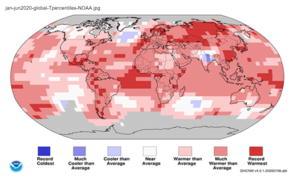
|
August 2020 Newsletter
Working the Land and Improving Buildings for a Cooler 2021!
|

Supporting State Energy Efficiency Building Code
On July 28, 2020, the BCC unanimously approved submitting a letter to the Construction Industries Commission supporting the state-wide adoption of the 2018 International Energy Conservation Code. If adopted, the code would require all new residential and commercial buildings to install materials and systems that decrease the buildings overall energy use through prescriptive or performance-based requirements. A broad, cross-section of New Mexicans—including home owners, renters, architects, residential and commercial builders, building trade associations, electrical and mechanical contractors, building trade unions, advocates for the income-challenged, faith-based leaders, fixed-income retirees, environmental groups, energy consultants, affordable housing providers, and state employees—provided oral testimony at the State's public hearing on July 29, 2020, supporting the adoption of the code. Testimony noted that the code will reduce occupant utility bills, which is especially crucial for low income families that have a disproportionately high utility-cost burden. The new code would also provide a payback on the small increased upfront costs within a handful of years, reduce energy demand statewide, and help New Mexico reach our energy and climate change goals.
|

If you have a pulse, you felt the heat wave was more intense than usual this past July. Local environmental scientist, Steven Rudnick, Ph.D., recently weighed in on the urgency, "We are very much on track for the second hottest or even the hottest year on record unless a significant La Niña develops, which is possible." Currently, 2016 is the hottest year on record with 2019 a close second (a whopping 0.07°F cooler). The Southwest is the fastest heating region in the US, with average summer time temperatures up 2.4 °F over the past 50 years. Rising temperatures from climate change affect our health, food supply, and economic prosperity. Find out the many ways planting strategically makes a difference!
|

Although the world is warming, it’s even hotter in cities, which can be up to 10°C (that’s 18°F!) hotter than surrounding areas. Cities become warmer as the earth’s natural cooling systems—trees and vegetation—are replaced by buildings, asphalt, and concrete, which absorb the sun’s heat. Though the impacts of urban heat islands may seem far off to us in rural Santa Fe County, we’re feeling its effects here too. The Trust for Public Lands’ Urban Heat Island Severity Map shows more populated areas in Edgewood, Santa Fe, Pojoaque, and Española are warmer than nearby suburban and rural neighborhoods. The National Weather Service reports that extreme heat is the leading cause of weather-related deaths in the United States, another important reason to mitigate the effects of urban heat islands in our communities. Learn ways you can cool your own environment in the section below.
|
|
Adapting to Today's Circumstances:
Get Involved and Support!
(Click on orange text below for associated links and information.)
|
|
|
|
|
|
|
Sustainability Comments or Questions?
We are your local advisors on all things sustainability in Santa Fe County. Call us about anything from water conservation, cleaner transportation, solar and renewable energy, composting, recycling, etc. Or let us know what you would like to learn more about in our newsletter.
CONTACTS
Claudia Borchert, 505.992.3044
Jacqueline Beam, 505.992.9832
Adeline Murthy, 505.992.9862
SF COUNTY SUSTAINABILITY WEBSITE PAGE: NEWSLETTER ARCHIVE
|
|